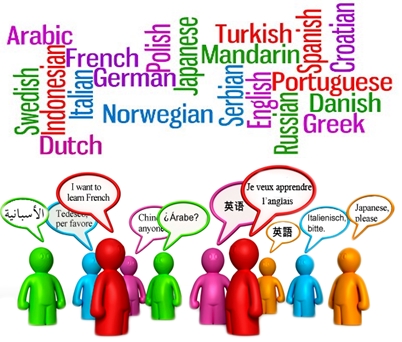
English and Hebrew are a lot different languages derived from difference origins. It takes professional knowledge of translation. There are various systems like translators that do the job, but many examples of translating apps e.g. Google translators, are seen to be ridiculous. If one needs to translate English to Hebrew, it is preferable to go for a professional legal translation services agency as they offer such services.
Table of Contents
Introduction of the Hebrew language:
In the Afro-Asiatic family, Hebrew is considered a Semitic language; also, Hebrew fares a lot of qualities in the Arabic language. It is said to be the official language of Israel and the religious language of Jews. As a result, it is being used daily by almost more than 7 million Israelites.
The people living in the Middle East region around Jerusalem had He Few as their ancient language. It came into use as a vernacular language as per Roman invaders’ expulsion of Jews In the second century, while the Zionist movement in the nineteenth century it was revived when new words were developed to make the language useful for communicating in today’s world. This language is considered by the Israelite as an important tool in building a community or nation of like-minded immigrants in the world.
English vs Hebrew
As with the Semitic language, many features of the Hebrew language are a lot different from the English language. This can make it hard for beginners who are willing to learn the opposite language, such as ESL students. This is also the reason that can complicate things when someone attempts to English to Hebrew translation.
Letters:
Hebrew Language, unlike English, doesn’t spell left to right horizontally it is spelled right to left, just like the Arabic language. Books with native English speakers, which are open to that, could be the final page. These letters consist of 22 consonants, five of which are spelled differently when they are written at the end of the word.
A few consonants could be changed by adding a full stop to represent any vowel, such as help for children and those learning Hebrew as another language. The contemporary Hebrew text, handwritten or printed, contains all the Western consonants, spaces, and punctuation marks. Unlike most of the English and Arabic manuscripts, the handwritten Hebrew doesn’t contrast the alphabet letters.
As we know, basic Hebrew letters do not contain vowels; in fact, Some English readers leave them deliberately at the beginning when writing English. Inexperienced people may face some difficulty because of the left-to-right spelled text when they read.
Pragmatics:
The name of the last or last letter of the word is usually emphasized in the Hebrew language. In English, the syllable stress is more finely organized compared to Hebrew. It has an impact on Israeli students making them use vocal patterns as they are not native speakers of English; it also makes it difficult for them to translate English to the Hebrew language.
Hebrew VS English Grammar (Verb/ tenses):
The Hebrew language grammar is very similar to English grammar because it has tenses past, present, and future, specific situations, priorities, and conclusions. It has a practical and usable voice and distinguishes between inconsistencies and inconsistencies. There are slight variations, however, which can lead to misuse of the verbs of English. As an example, Copula is used in the Hebrew language to make it as modern as English.
Grammar – Other: The word order of the Legal translation Tecom is more flexible as compared to the English word syntax of verb objects. In Hebrew, adjectives mostly stand after the translated nouns.
As compared to English, Hebrew is a complete language. As an example, Hebrews has many meanings of verbs, nouns, and pronouns naturally according to the preceding predicate, and also adjectives should be kindred with the plural and sex in the changed nouns. (Hebrews is for both men and women.) In such aspect of grammar, the clarity of the English language makes it more acceptable to people who speak Hebrew, and those who have issues with the English language somewhere else.
Hebrew does not contain any definite article. In addition, the use of a definite article does not correspond to English use. It may lead to common omissions when someone attempts to translate English to Hebrew.
Vocabulary:
As Contemporary Hebrew partially contains words borrowed from other languages when in the 19th century Hebrew was revived, Israeli ESL readers may go through familiar words. On the other side, prominent in spelling systems limit the ability to see English / Hebrew conjunctions in reading.
Is the Hebrew language still spoken?

By the third century, it almost got dead but over years, it came back to life, and now Hebrew is considered as the only language that is successfully revived. In 1922, Israel made Hebrew the official language. Hebrew was spoken by 8.3 million inhabitants. Only 50 percent of those who speak it as their first language, it is spread all over the land. Due to various migration patterns, one section speaks languages that include English, Yiddish, Arabic, and Polish, among others.
Conclusion and Recommendations
To sum up, what has been stated above, Translating names from one language to another is a tricky job to do but sometimes it becomes a requirement for academic or legal service purposes. Every language has its anatomy or format of words and phrases; that is what makes it even more difficult.
However, no matter what your requirements are, we always recommend going to a professional company to fulfill all your translation needs.
As it requires a good knowledge of concepts, format, vocabulary, and context as per different languages, it is better to go let the professionals do the job. There are comparatively fewer agencies that translate, but there are certified legal translation services agencies in UAE that are brilliant at this job. One should reach out to such agencies to avoid the hustle.







